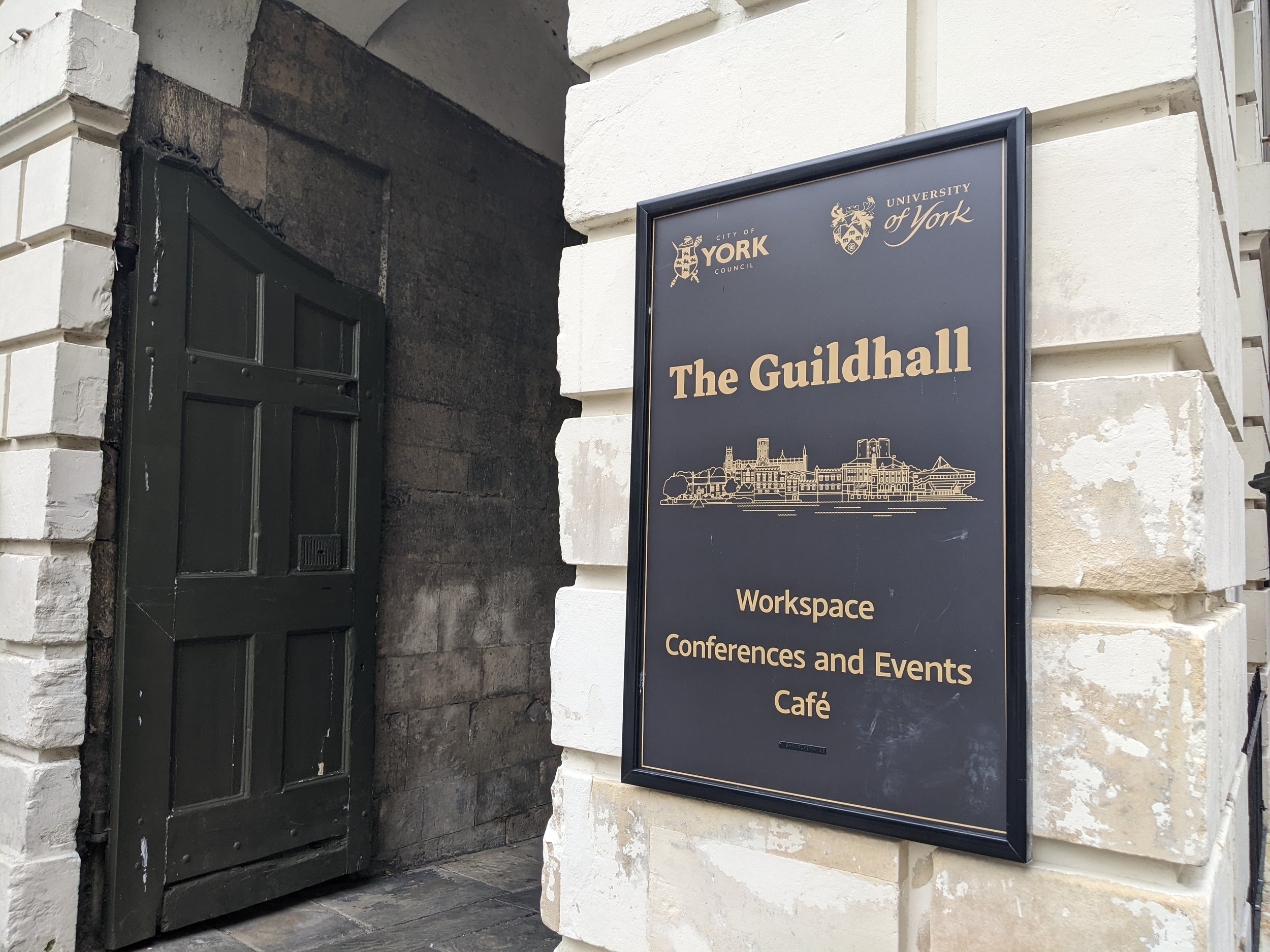The Guildhall:
York’s Postwar Cultural Economy
Directions to The Guildhall York
Guildhall was initially built in the 15th century and embodies a medieval architectural style – a style which punctuates much of York’s city centre and plays a significant part in assembling its unique atmosphere. Initially, Guildhall acted as a space for the meeting of the city’s guilds (associations of artisans and merchants who oversee the practice of their craft/trade in a particular territory), as well as was involved in numerous other historical events and happenings (entertainment of King Richard III, trial of St Margaret Clitherow, English Civil War, etc.). Starting in the 19th century Guildhall was expanded and came to house City of York Council activities. However, during WWII, much of the building was destroyed during a Baedeker raid. In the post-war reconstruction era, this building was rebuilt and restored to its original form, and was re-opened with the help of Queen Elizabeth The Queen Mother in 1960. After its reopening, it continued to host meetings associated with the council.
In terms of Guildhall’s current social life, it is very much a multi-purpose space. Most recently it has come to house an expanding project associated with the York Science Park and is intended to act as an incubator for techno-scientific entrpereunrial activity in the city, operating as one of a couple physical nodes in the centre where the University – a post-war modernist project – is becoming increasingly involved in everyday city life. Additionally, Guildhall hosts a number of public events associated with the city’s reputation as a market town and cultural heritage site. York has been a travel destination for quite a while, however the strategic pursuit of this kind of interactivity intensified during the Thatcher years when city councils across the nation lost some important streams of income due to neoliberal economic restructuring. It was during this time that York began drawing heavily on its more significant role in the past and especially preserving and renovating, displaying and performing its histories and traditions.
Guildhall thus brings together York's academic and touristic entanglements and acts as an ideal point of referenece for learning about the city’s post-war cultural-economic trajectory. This trajectory is signfigant to you because it made possible your life here as a university student or tourist. This trajectory is thus key to appreciating why York looks, operates, and feels the way it does, and why your experience here takes on the particular shape and rhythm it does.
Listen to the podcast below to learn more!
Kath Bassett is a Lecturer in the Department of Sociology at the University of York. Their research is concerned with mundane forms of governance, and is presently focused on locative media platforms and algorithmic governmentality in the context of mobilities, urban economies, and touristic development. Their research has been published in Mediapolis: A Journal of Cities and Culture, Social Science and Medicine, New Media & Society, and Feminist Studies. They are also the co-developer of this website.





